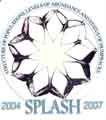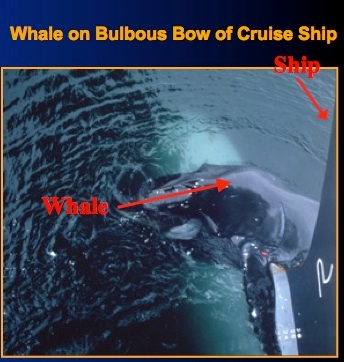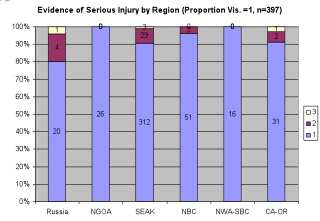
Home Methods 1 | Photo Identification | Mark and Recapture Biopsy | Summer Feeding Areas, Wintering Grounds and Migration | Human Impact | Population Estimates
Activity 1: Questions about SPLASH | Activity 2: Interpreting Graphs | Activity 3: Mark and Recapture | Activity 4: Estimating Humpback Population Growth | Activity 5: Whale Tails: Photo ID | Activity Answers
Humpback whales face many human hazards during their yearly cycle: Migrating or sleeping whales are hit by ships; they get entangled in fishing gear; and the water they live is polluted.
Humpbacks store the pollutants in their blubber. The biopsy samples taken by researchers contained a small amount of blubber that biologists used to assess the concentrations of pollutants in the whales.
The highest concentration of pollutants in North Pacific humpback blubber was found off the Southern California coast and the concentrations decreased the further north and west whales were found. The level of DDT in Southern California humpbacks was six times higher than concentrations found from Northern California whales. This is probably due to the historic discharge of DDT off the Palos Verde Peninsula. Although, DDT has been banned in the U.S. for 40 years, it persists in the environment for a long time. In spite of the level of pollutants, biologists believe that the concentrations found in humpback whales does not represent an immediate threat.
When humpbacks become entangled in fishing gear, they are injured or may even die. SPLASH biologists used over 900 photographs to analyze scars. Unhealed injuries were observed in all regions studied. The diagram above shows the number of whales that had 1-2 or 3 serious injuries. Whales feeding in coastal areas were more likely to become entangled in nets. The fishing gear that is most destructive to whales are pots (traps), gill nets, and seines, since an unsuspecting whale might swim right into one and get tangled up. Some entangled whales carried the gear over long distances. For example 8 humpbacks were found in Hawaii with gear that was towed from Alaska, a minimum distance of over 2,000 nm. Lastly, 6% of all confirmed reports of entanglement resulted in a whale’s death. The most lethal type of fishing gear to whales was a seine ( a net that drapes down in the water column).

